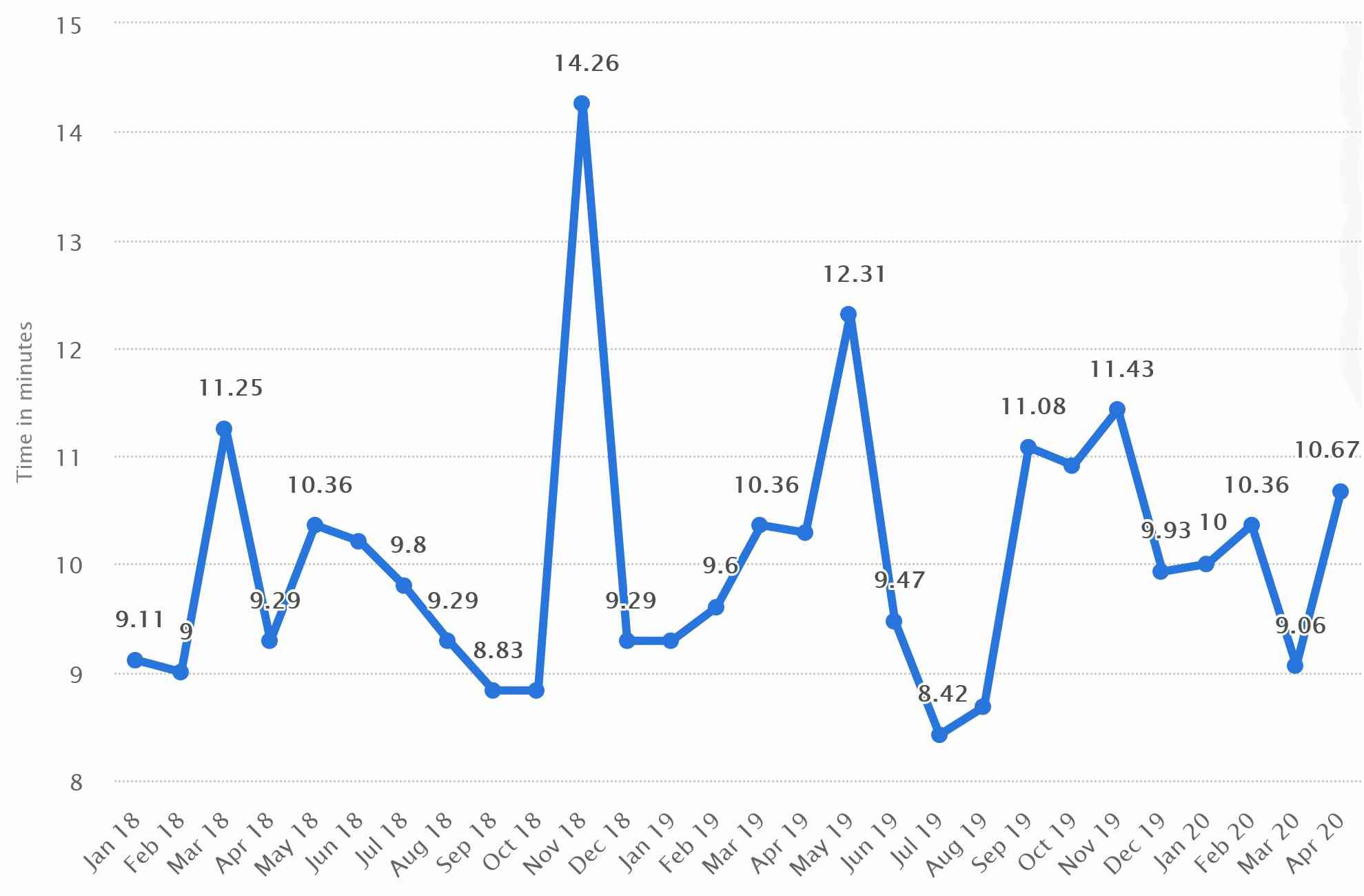Proof of Work (PoW)
Proof of Work (PoW) is a consensus algorithm utilized in blockchain networks to validate transactions and add new blocks to the blockchain. It was first introduced by Bitcoin and has since become a widely adopted mechanism across various cryptocurrencies.
In the PoW consensus algorithm, miners compete to solve complex mathematical puzzles in order to validate and append blocks to the blockchain. These puzzles require a significant amount of computational power and energy to solve, making it challenging for malicious actors to manipulate the network.
The process of solving these puzzles involves repeatedly hashing the block’s data until a specific condition, such as finding a hash with a certain number of leading zeros, is met. This requires a trial-and-error approach, as there is no method to predict or calculate the correct value.
Once a miner finds a solution, it is shared with the network for verification. Other miners then validate the solution by independently confirming its accuracy. This consensus check ensures that only the valid solutions are accepted, maintaining the integrity and security of the blockchain.
Proof of Work has several advantages. Firstly, it provides security against double-spending attacks, as altering a single transaction would require recomputing the solution for all subsequent blocks. Additionally, PoW ensures a decentralized network, as anyone with computational power can participate in the mining process, minimizing the risk of concentration of power.
However, PoW also has its drawbacks. The intensive computational requirements consume vast amounts of energy, leading to concerns about its environmental impact. Moreover, the scalability of PoW-based blockchains is limited due to the time and energy required to find solutions. As a result, alternative consensus mechanisms such as Proof of Stake (PoS) have emerged as more energy-efficient alternatives.
In summary, Proof of Work is a key component of blockchain technology, providing a secure and decentralized method for validating transactions and adding blocks to the blockchain. While it has its limitations, PoW has been instrumental in the success of several cryptocurrencies and continues to be a fundamental building block in the blockchain ecosystem.
Proof of Stake (PoS)
Proof of Stake (PoS) is a consensus algorithm used in blockchain networks to validate transactions and add new blocks to the blockchain. Unlike Proof of Work (PoW) which relies on computational power, PoS relies on the concept of “staking” or holding a certain amount of cryptocurrency in order to participate in the validation process.
In a PoS system, validators are chosen based on the number of coins they hold and are willing to “stake” or lock up as collateral. The probability of being chosen to validate a block is proportional to the number of coins staked. This means that the more coins a validator stakes, the higher their chances of being selected to validate a block and receive the associated rewards.
The validation process in PoS involves validators signing blocks with their private keys to confirm their authenticity. These signed blocks are then added to the blockchain after reaching a consensus among other validators. This consensus is achieved through a variety of mechanisms such as randomized block selection or a deterministic algorithm based on coin age.
PoS offers several advantages over PoW. Firstly, it is significantly more energy-efficient as it doesn’t require miners to solve computationally intensive puzzles. Instead, it relies on the ownership and stake of the cryptocurrency, reducing the energy consumption associated with mining. This makes PoS a more sustainable alternative for blockchain networks.
Furthermore, PoS reduces the risk of a 51% attack, where a single entity gains control of the majority of computational power in a blockchain network. In PoS, an attacker would need to acquire a majority stake in the cryptocurrency, which can be costly and economically unviable.
However, PoS is not without its challenges. One of the main concerns is the “nothing at stake” problem, where validators have nothing to lose by validating multiple competing blocks. To mitigate this, various mechanisms such as punishment for malicious behavior or the requirement of collateral have been implemented.
In summary, Proof of Stake is a consensus algorithm that offers an energy-efficient and secure method for validating transactions and adding blocks to the blockchain. It leverages the concept of staking to determine block validators, reducing the environmental impact associated with mining. While PoS is not without its challenges, it has gained popularity as an alternative to PoW due to its scalability and sustainability.
Delegated Proof of Stake (DPoS)
Delegated Proof of Stake (DPoS) is a consensus algorithm introduced to address some of the scalability and energy consumption issues associated with Proof of Work (PoW) and Proof of Stake (PoS) mechanisms. DPoS operates on the principle of a representative democracy, where a group of selected individuals, known as delegates or witnesses, are responsible for validating transactions and adding new blocks to the blockchain.
In a DPoS system, token holders in the network vote to elect a fixed number of delegates who will have the authority to validate transactions. These delegates are given the power to produce blocks and sign them on behalf of the other token holders. The number of delegates varies depending on the blockchain implementation, but typically ranges from 21 to 101.
Unlike PoS, where all token holders can participate in block validation based on their stake, DPoS simplifies the process by entrusting block production to a limited number of elected delegates. This significantly improves the scalability of the network, as the consensus process becomes more efficient and streamlined.
One of the key features of DPoS is its ability to achieve quick block confirmation times. Since a small group of delegates is responsible for block production, transaction confirmations can be achieved in a matter of seconds, providing faster and more efficient transactions compared to PoW or PoS-based networks.
DPoS also addresses the issue of potential centralization by implementing a rotating schedule for delegates. Through this rotation, all elected delegates get the opportunity to validate transactions and produce blocks, preventing concentration of power in the hands of a few individuals.
However, DPoS does have its limitations. The process of selecting delegates through voting can sometimes be vulnerable to voting cartels or whales possessing a large number of tokens. These individuals or groups can potentially manipulate the election process and exert influence over the network.
In summary, Delegated Proof of Stake is a consensus algorithm that combines the benefits of a representative democracy with blockchain technology. By electing delegates to validate transactions and produce blocks, DPoS improves scalability, reduces block confirmation times, and provides a more efficient and streamlined consensus process. While it addresses some of the concerns of PoW and PoS, caution must be exercised to ensure fair and unbiased election of delegates in order to maintain the decentralized nature of the network.
Proof of Burn (PoB)
Proof of Burn (PoB) is a consensus algorithm used in blockchain networks as an alternative to traditional Proof of Work (PoW) or Proof of Stake (PoS) mechanisms. It involves the intentional burning or destruction of cryptocurrency tokens as a way to prove commitment to the network and gain the right to participate in block validation.
In a PoB system, participants burn a certain amount of their cryptocurrency tokens by sending them to an unspendable address, often referred to as the “burn address.” The act of burning the tokens serves as proof of the participant’s willingness to invest in the network and align their incentives with its success.
The burned tokens are irretrievable and effectively removed from circulation, reducing the total supply of the cryptocurrency. This reduction in supply can lead to increased scarcity and potentially have a positive impact on the value of the remaining tokens.
Once tokens have been burned, participants are eligible to become validators and contribute to the block validation process. The selection of validators in PoB can vary depending on the specific blockchain implementation, but it usually involves a random or deterministic approach.
Proof of Burn has several benefits and use cases. Firstly, it provides an alternative to PoW, which is known for its energy-intensive nature. By burning tokens instead of expending computational power, PoB offers a more environmentally friendly consensus mechanism.
Moreover, PoB encourages long-term commitment and investment in the network. Participants who burn their tokens demonstrate their dedication to the blockchain, as they are effectively and irreversibly sacrificing value. This commitment enhances network security and creates a stronger ecosystem.
However, PoB also has its limitations and potential concerns. One concern is the possibility of token hoarding or accumulation before the burning process, which could lead to centralization and concentration of power. To address this, some PoB implementations introduce measures to prevent excessive token accumulation and maintain a more decentralized network.
In summary, Proof of Burn is a unique consensus algorithm that relies on the deliberate burning of cryptocurrency tokens to prove commitment to a blockchain network. It offers an environmentally friendly alternative to PoW and encourages long-term investment in the ecosystem. While PoB brings certain advantages, careful consideration must be given to potential token hoarding and centralization risks to ensure a balanced and decentralized network.
Proof of Capacity (PoC)
Proof of Capacity (PoC) is a consensus algorithm used in blockchain networks that leverages participants’ available storage space as a measure of their contribution to the validation process. In PoC, miners demonstrate their computational capacity by allocating a significant amount of their hard drive space to store precomputed solutions, known as plots or plots of land.
Unlike Proof of Work (PoW) or Proof of Stake (PoS), where participants invest computational power or cryptocurrency holdings respectively, PoC focuses on utilizing existing storage capabilities. Participants generate plots by running a computationally expensive algorithm once and storing the results on their hard drives.
The validation process in PoC involves a challenge whereby the network selects a random plot and requests the associated solution. Miners then retrieve the precomputed solution from their hard drives and submit it to the network for verification. The probability of being selected to validate a block is proportional to the amount of storage space allocated to plots.
One of the primary advantages of PoC is its energy efficiency. The precomputation of plots requires substantial computational resources, but once completed, the actual mining process is significantly less energy-intensive compared to PoW-based systems. Miners can validate blocks and consume less energy, resulting in lower operational costs and a smaller carbon footprint.
Furthermore, PoC encourages decentralized participation as it allows individuals with consumer-grade hardware and low power consumption devices to participate in the validation process. This reduces the reliance on specialized mining equipment and levels the playing field for more participants, enhancing the overall decentralization of the network.
However, PoC also has its limitations. Generating plots and storing them on hard drives can be time-consuming and resource-intensive initially. Additionally, the efficiency of PoC is highly dependent on the speed of accessing the stored data, which can be a bottleneck and affect the speed of block validation.
In summary, Proof of Capacity is a consensus algorithm that utilizes participants’ available storage capacity to validate blocks and contribute to the blockchain network. It offers a more energy-efficient approach compared to PoW and provides opportunities for decentralized participation. While it may have resource and accessibility considerations, PoC showcases the potential benefits of leveraging existing storage capabilities in blockchain consensus.
Proof of Importance (PoI)
Proof of Importance (PoI) is a consensus algorithm that aims to establish the importance or significance of participants in a blockchain network based on certain criteria. PoI is often associated with the NEM (New Economy Movement) blockchain, where it is used to determine the probability of participants being chosen to create new blocks and validate transactions.
In PoI, participants’ importance is determined by considering various factors such as their account balance, transaction history, and their engagement with the network. This algorithm encourages active participation and rewards users who contribute positively to the ecosystem.
The importance score is calculated based on a combination of factors, including the number of coins held by the participant, the history of their transactions, and the volume of transactions involving their account. This approach promotes the concept of “vested interests,” where participants who have a substantial stake in the network and actively use their coins are more likely to be selected for block validation.
One key advantage of PoI is its ability to incentivize long-term engagement and discourage hoarding of coins. By rewarding participants who actively transact and contribute to the network, PoI encourages a healthy circulation of coins and fosters a more vibrant and dynamic ecosystem.
Furthermore, PoI promotes fairness and equality among participants, as it is not solely based on the size of one’s account balance. Instead, it considers a range of factors to determine importance, giving participants with a smaller balance but a consistent transaction history a chance to be selected for block validation.
However, PoI does have its limitations. One concern is the potential for sybil attacks, where an entity creates numerous accounts and engages in low-value transactions to boost their importance score artificially. Implementing mitigations such as reputation systems or considering the reputation of the transacting parties can help address this issue.
In summary, Proof of Importance is a consensus algorithm that determines participants’ importance based on various factors such as their account balance and transaction history. By incentivizing active engagement and rewarding positive contributions to the network, PoI encourages a healthy circulation of coins and promotes fairness among participants. While there are challenges such as potential sybil attacks, PoI showcases the potential benefits of considering importance beyond the mere account balance in blockchain consensus.
Proof of Activity (PoA)
Proof of Activity (PoA) is a hybrid consensus algorithm that combines elements of both Proof of Work (PoW) and Proof of Stake (PoS) to validate transactions and create new blocks in a blockchain network. PoA was introduced as a way to address the scalability and energy efficiency issues associated with PoW while maintaining a high level of security.
In PoA, the process begins with a group of miners who use computational power to solve a mathematical puzzle, similar to PoW. Once a solution is found, the miner becomes a leader and proceeds to create a new block. However, instead of adding the block immediately to the blockchain, the miner must then pass it to the PoS participants for validation.
The PoS participants, often referred to as “validators,” are selected based on the number of coins they own and are willing to stake. They assess the block created by the PoW miner and verify its validity. To encourage honest behavior, validators are required to stake their own coins as collateral. If they detect any malicious activity or false transactions in the block, they can challenge it and potentially have their stake slashed if they are unable to provide a valid challenge.
If the PoS participants reach a consensus and approve the block, it is added to the blockchain. This combined PoW and PoS approach ensures a balance between security and efficiency. The PoW process helps prevent Sybil attacks and maintains a high level of security while the PoS participants validate and confirm the correctness of the blocks.
PoA offers several advantages. Firstly, it reduces the energy consumption associated with traditional PoW algorithms. By utilizing PoS for validation, PoA achieves a more energy-efficient consensus mechanism without sacrificing security.
Furthermore, PoA allows for faster block confirmation times and higher transaction throughput. The integration of PoW and PoS enables the network to quickly validate and add blocks to the blockchain, resulting in faster and more efficient transactions.
However, PoA does have its limitations. The selection of PoS validators and the distribution of stake can still lead to some centralization of power. Careful attention must be given to ensure a fair and decentralized selection process to maintain the overall security and integrity of the network.
In summary, Proof of Activity is a hybrid consensus algorithm that combines Proof of Work and Proof of Stake to enhance the scalability and energy efficiency of blockchain networks. By utilizing the computational power of PoW miners and the validation capabilities of PoS participants, PoA achieves a balance between security and efficiency. While there are concerns about centralization, PoA presents a promising solution for blockchain networks seeking a more sustainable and scalable consensus mechanism.
Proof of Elapsed Time (PoET)
Proof of Elapsed Time (PoET) is a consensus algorithm introduced by Intel in collaboration with the Hyperledger Sawtooth blockchain project. PoET focuses on achieving consensus in a fair and energy-efficient manner by leveraging trusted execution environments (TEEs) and a randomized leader selection process.
In PoET, each participating node in the network is given a unique wait time, determined through a random lottery process. Nodes must wait for their designated time to elapse in order to propose a new block or validate a transaction. This wait time is enforced by the TEE, ensuring that no node can cheat by proposing a block before its designated wait time has passed.
By implementing this wait time, PoET achieves a fair and decentralized leader selection process. The node that has the shortest wait time becomes the leader and is responsible for adding the new block to the blockchain. This randomized leader selection helps prevent centralization and makes it difficult for malicious actors to predict or manipulate the selection process.
An important component of PoET is the usage of trusted execution environments. TEEs provide a secure and isolated environment for executing code, protecting the node’s wait time and ensuring fairness. This prevents nodes from tampering with the wait time or manipulating the selection process, enhancing the integrity of the consensus algorithm.
PoET offers several advantages, including improved energy efficiency. By eliminating the need for resource-intensive puzzle-solving or computational power, PoET significantly reduces energy consumption compared to traditional proof-of-work algorithms.
Moreover, PoET ensures a more inclusive and scalable network, as it allows participants with low computational power to actively participate in the consensus process. This opens up opportunities for greater decentralization and encourages broader participation within the blockchain network.
However, PoET does have some limitations. It relies on the integrity and security of the trusted execution environment. If the TEE is compromised, it can potentially undermine the fairness and security of the consensus algorithm. Additionally, the wait-time lottery process may lead to longer confirmation times, which could impact the overall efficiency of the network.
In summary, Proof of Elapsed Time is a consensus algorithm that utilizes trusted execution environments and randomized leader selection to achieve consensus in a fair and energy-efficient manner. By eliminating the need for computational puzzles and enabling broader participation, PoET offers a promising solution for creating scalable and inclusive blockchain networks. However, careful consideration must be given to the security and efficiency of the TEEs to maintain the integrity of the algorithm.
Proof of Authority (PoA)
Proof of Authority (PoA) is a consensus algorithm designed to prioritize transaction speed and network efficiency, making it ideal for private or consortium blockchains. Unlike other consensus mechanisms, PoA relies on a limited number of approved validators, known as authorities, who hold the power to validate transactions and create new blocks.
In a PoA system, the authorities are selected based on their reputation, identity, or their role within the organization or consortium that operates the blockchain network. These authorities are typically known entities with a high level of trust in their ability to maintain the network’s integrity.
Validators in a PoA network are responsible for validating and confirming transactions. They do not compete to solve complex mathematical puzzles or stake cryptocurrency holdings. Instead, their authority to validate transactions is predetermined and maintained based on their reputation and position as approved validators.
With PoA, transaction confirmations are typically fast and efficient due to the limited number of authorities involved. This makes PoA suitable for use cases that require quick confirmation times, such as corporate or enterprise-oriented blockchain networks.
Another advantage of PoA is its resistance to 51% attacks. Since the authorities are known and trusted entities, the likelihood of them colluding to manipulate the network is significantly reduced. This provides a high level of security and stability to the network.
However, PoA does have its limitations. It sacrifices some decentralization and censorship resistance compared to other consensus mechanisms such as Proof of Work (PoW) or Proof of Stake (PoS). The network’s security depends heavily on the trustworthiness and integrity of the authorities, making it less suitable for public or permissionless blockchains where decentralization is a primary concern.
Furthermore, the reliance on a small number of authorities can lead to potential centralization of power. If the authorities become compromised or act maliciously, they could abuse their position and manipulate the network. Careful selection and ongoing monitoring of the authorities are crucial to maintaining the integrity of the PoA network.
In summary, Proof of Authority is a consensus algorithm that prioritizes transaction speed and efficiency. It achieves this by relying on a limited number of trusted validators known as authorities. PoA is well-suited for private or consortium blockchain networks where quick confirmation times and trust among participants are paramount. While it sacrifices some decentralization, PoA offers a high level of security and resistance to 51% attacks when implemented with trusted and reputable authorities.

























